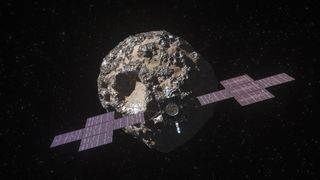New research led by the University of Oxford challenges the conventional wisdom that natural rock weathering serves as a carbon dioxide (CO2) sink. Instead, it reveals that it can be a substantial CO2 source, on par with volcanic emissions. Published in the journal Nature, these findings carry significant implications for climate change modeling.
Rocks harbor a vast reservoir of ancient carbon, comprising the remnants of plants and animals from millions of years ago. This geological carbon cycle operates as a thermostat, helping to regulate the Earth’s temperature. One way this happens is through chemical weathering, in which rocks absorb CO2 as certain minerals react with the weak acid in rainwater. This process counterbalances the continuous CO2 release from global volcanoes, forming an essential component of Earth’s natural carbon cycle that has sustained habitable surface conditions for eons.
However, the new study, for the first time, quantified an additional natural process that releases CO2 from rocks into the atmosphere, demonstrating its significance comparable to global volcanic emissions. Surprisingly, most models of the natural carbon cycle do not account for this process.
This phenomenon occurs when rocks originating from ancient seafloors, where organisms were buried in sediments, resurface—typically when mountain ranges like the Himalayas or the Andes form. This exposure of organic carbon in rocks to atmospheric oxygen and water can trigger reactions that release CO2. This implies that weathering rocks can be a CO2 source rather than the previously assumed CO2 sink.
Measuring this release of CO2 from weathering organic carbon in rocks had been a formidable challenge until this study. Researchers employed a tracer element, rhenium, which is released into water when rock organic carbon reacts with oxygen. By analyzing rhenium levels in river water, they were able to estimate CO2 release. However, conducting such measurements globally posed a significant obstacle.
To overcome this, the researchers estimated the quantity of organic carbon in surface rocks and identified areas where these rocks were being exposed rapidly, primarily due to erosion in steep, mountainous regions. They then utilized a supercomputer to simulate the intricate interplay of physical, chemical, and hydrological processes, thereby assembling a comprehensive global picture of CO2 emissions from weathering rocks.
Comparing this data to the potential CO2 drawdown by natural rock weathering of silicate minerals, the study identified numerous regions where weathering acted as a CO2 source, challenging prevailing notions about its impact on the carbon cycle.
Notably, hotspots of CO2 release were concentrated in high-uplift mountain ranges like the eastern Himalayas, the Rocky Mountains, and the Andes. The study determined that global CO2 emissions from rock organic carbon weathering amounted to 68 megatons of carbon annually.
Professor Robert Hilton, who leads the ROC-CO2 research project at the University of Oxford, emphasized that while this figure is approximately 100 times less than present-day human CO2 emissions from fossil fuel combustion, it is on par with the CO2 output of volcanoes worldwide, underscoring its role in Earth’s natural carbon cycle.
The study also raises questions about how human activities affecting erosion and the increased warming of rocks due to climate change may amplify this natural carbon release in the future. The research team is now exploring whether this natural CO2 release will increase in the coming century, as they currently lack the means to predict these potential changes.
In conclusion, while the CO2 release from rock weathering is modest compared to current human emissions, gaining a better understanding of these natural processes will enhance our ability to predict our carbon budget, according to Dr. Jesse Zondervan, the lead researcher on the study.






